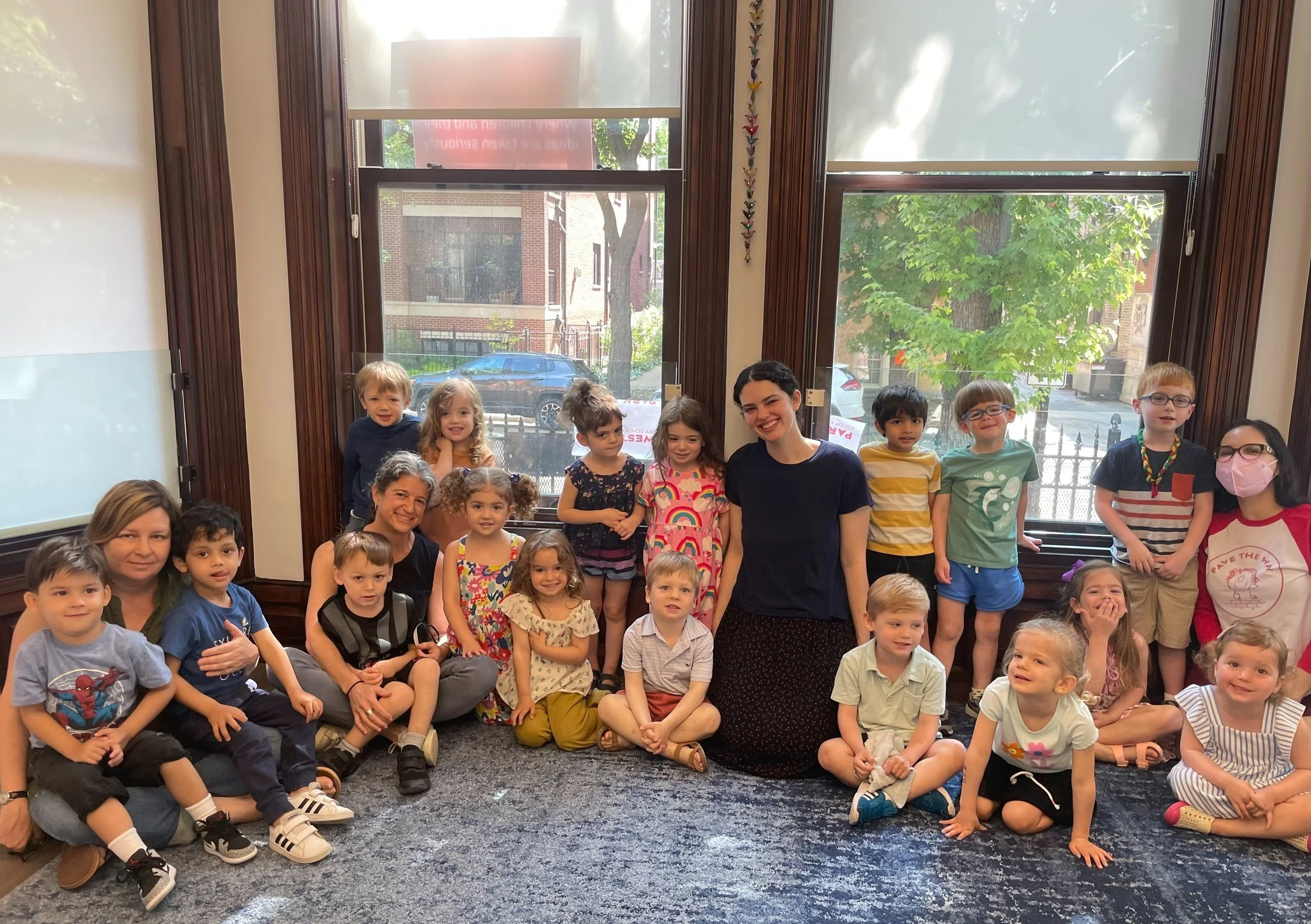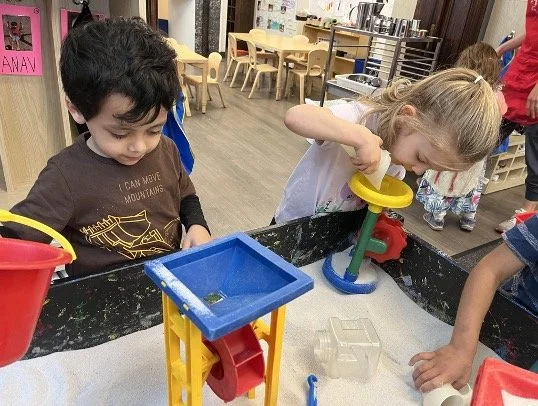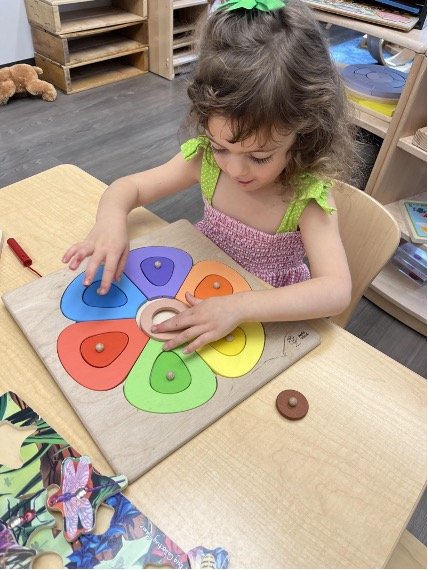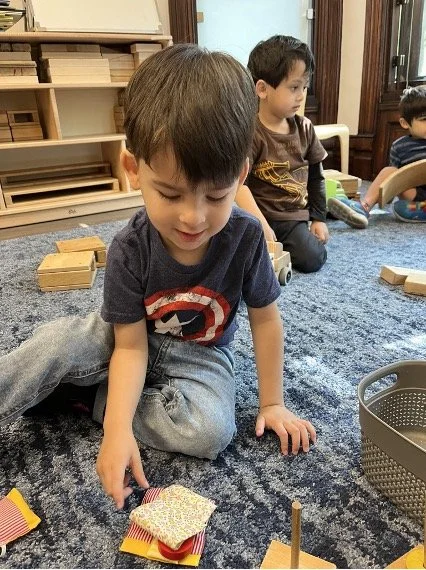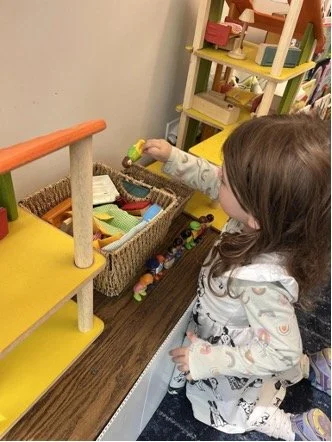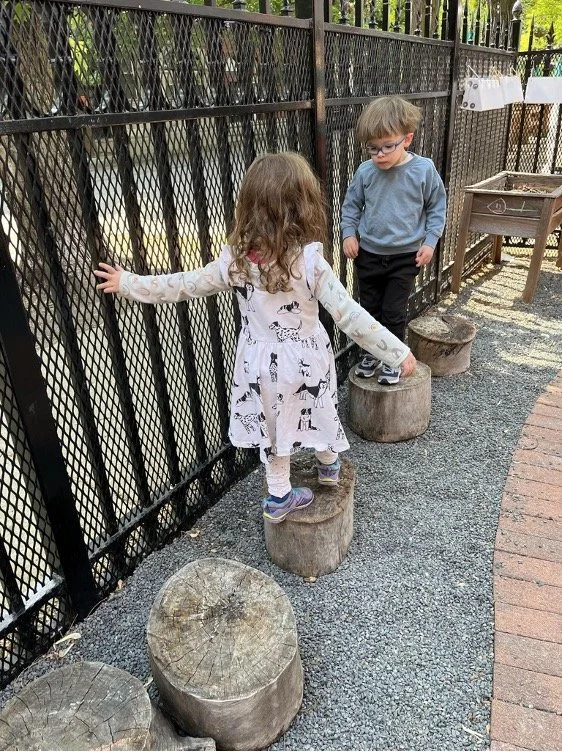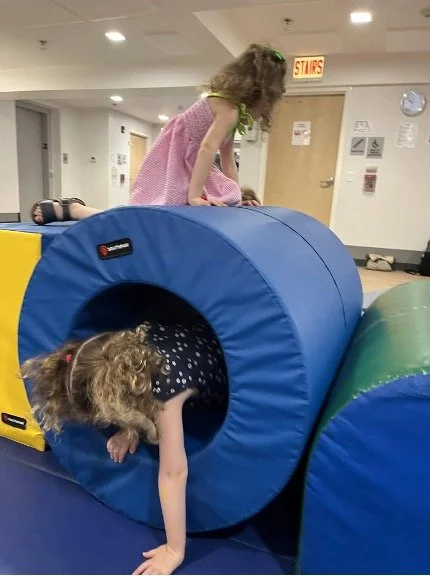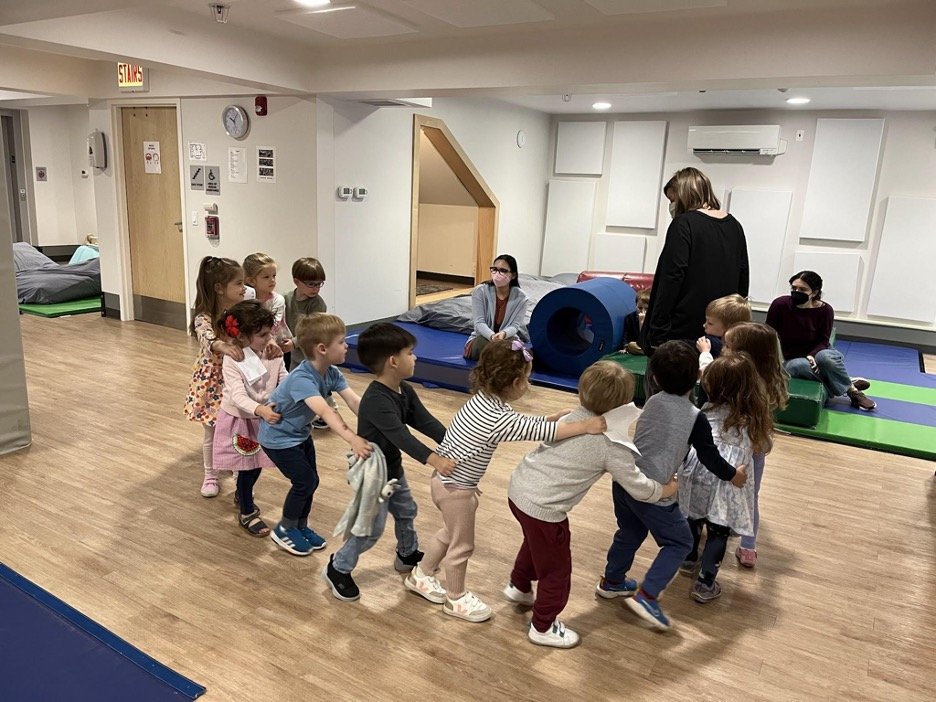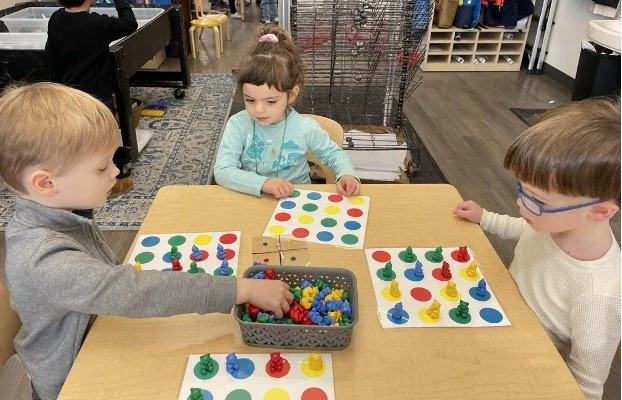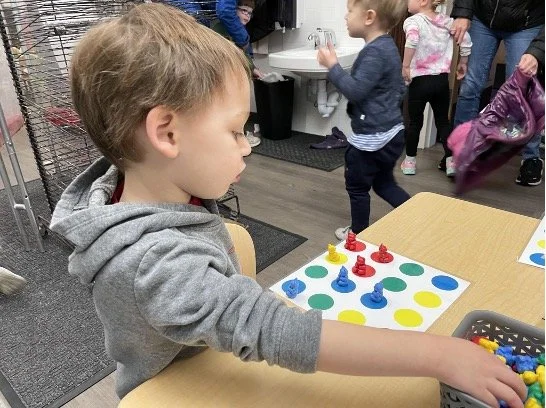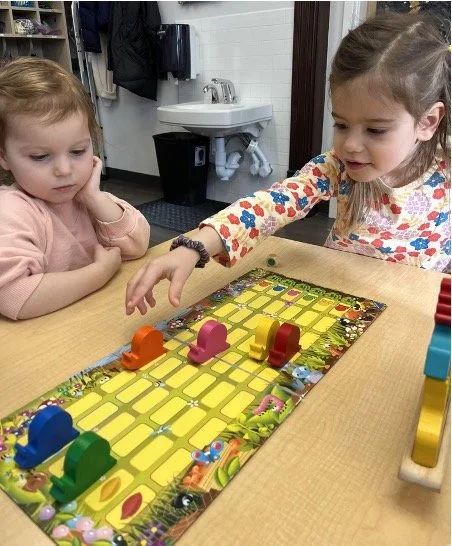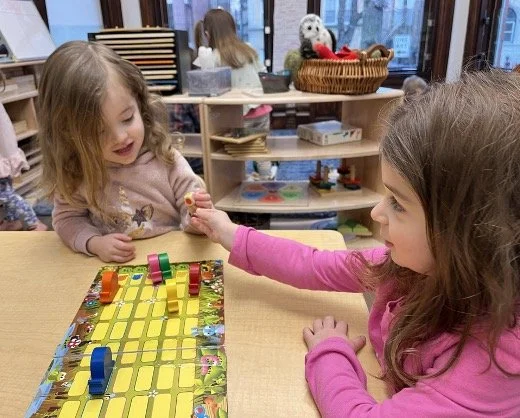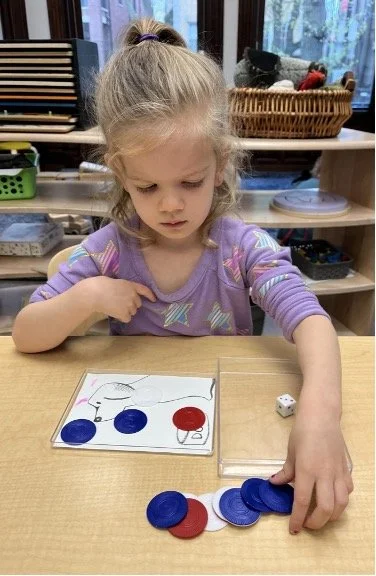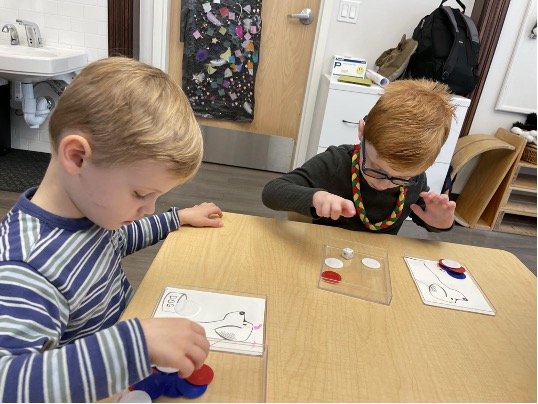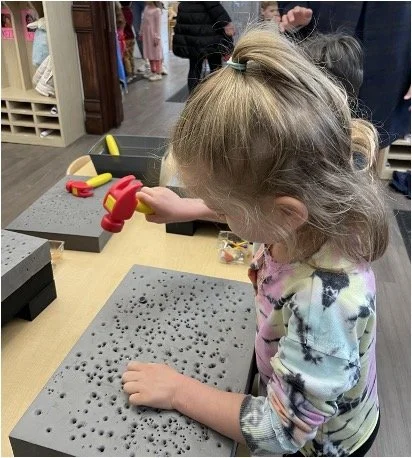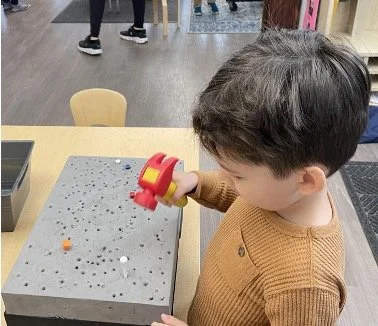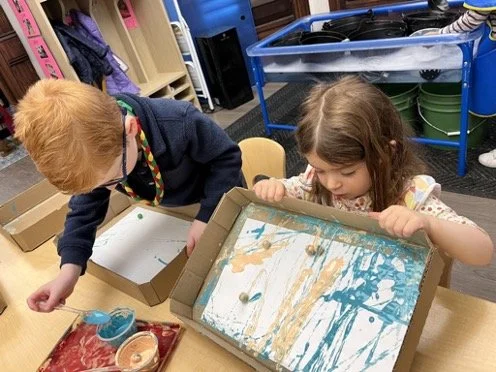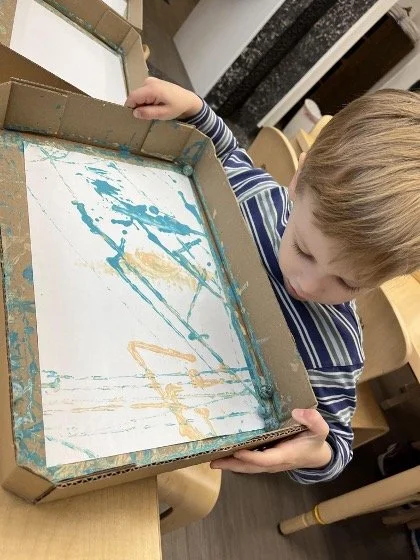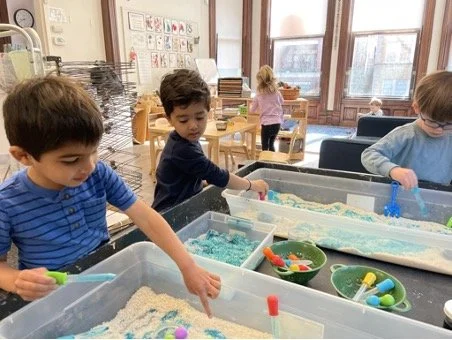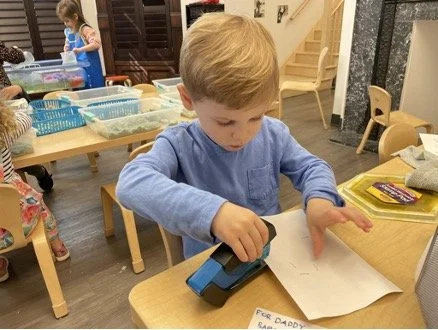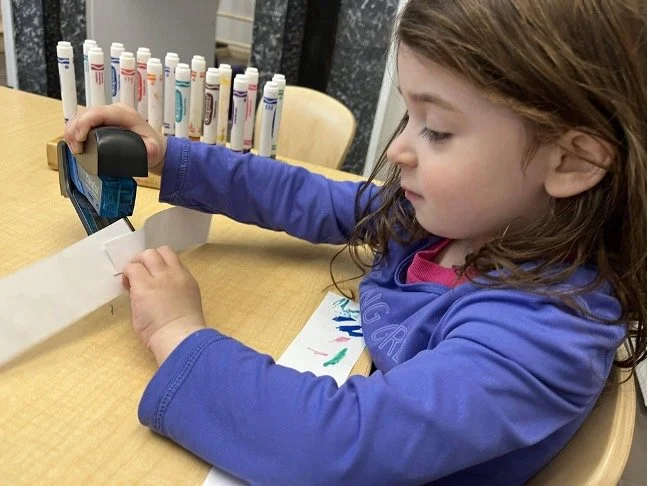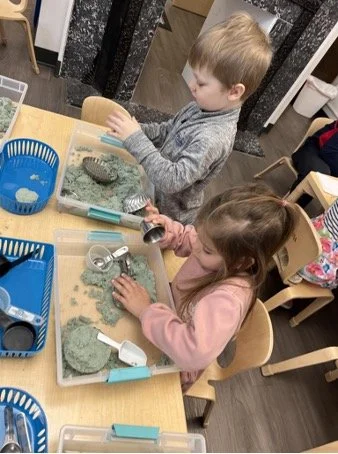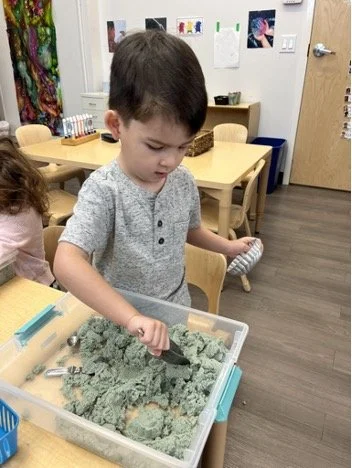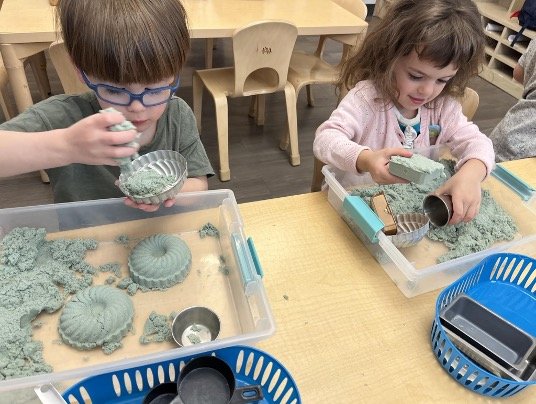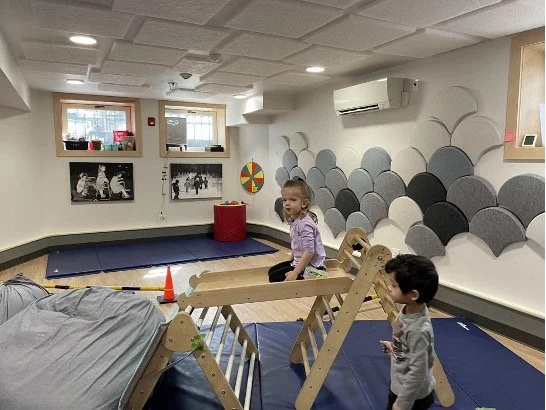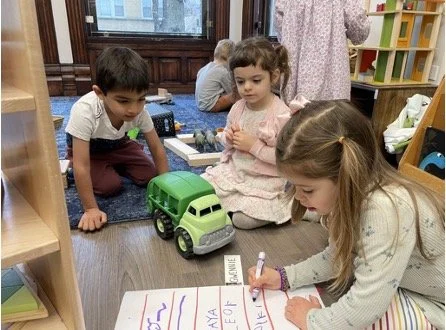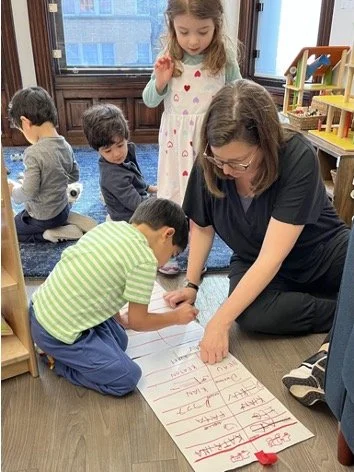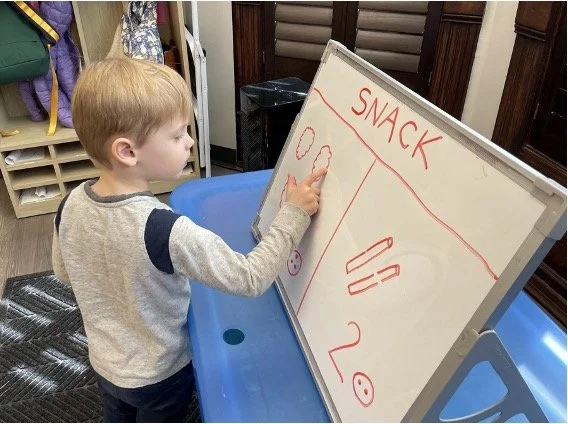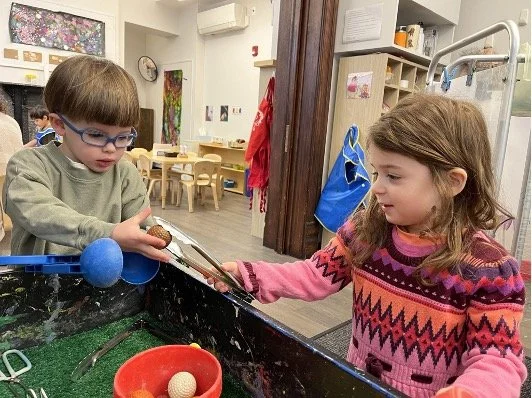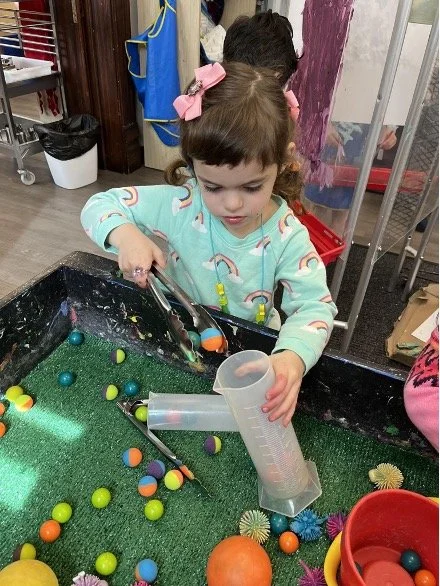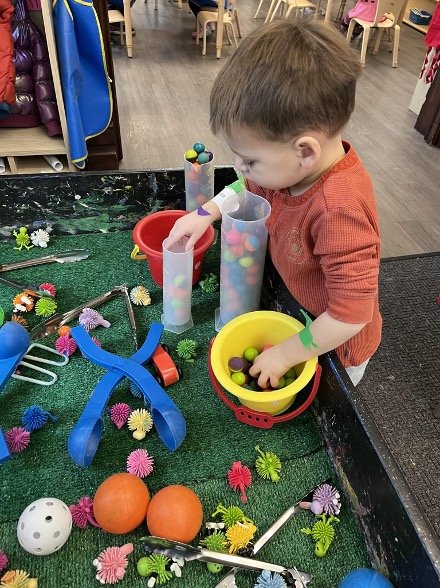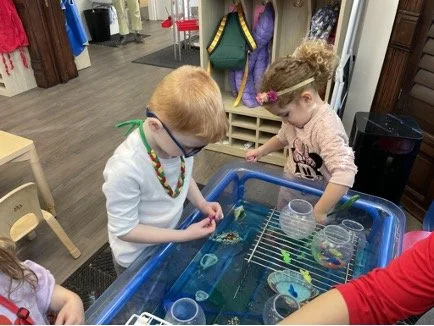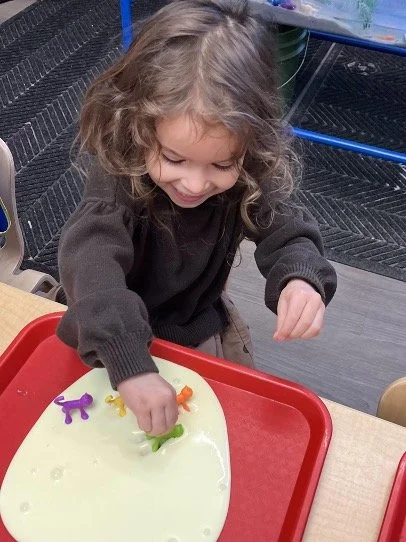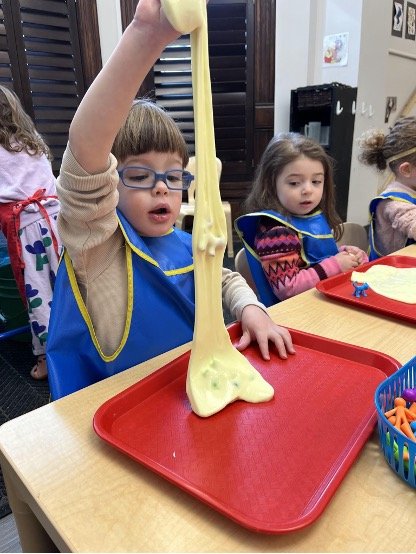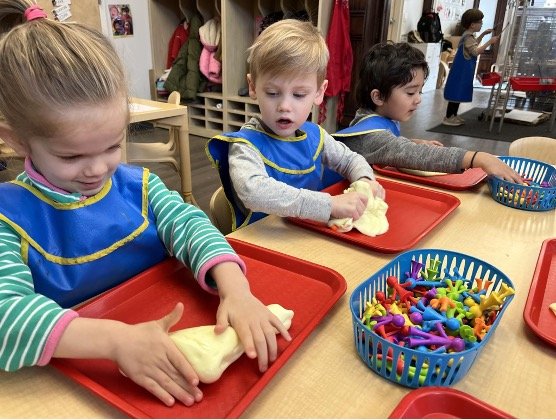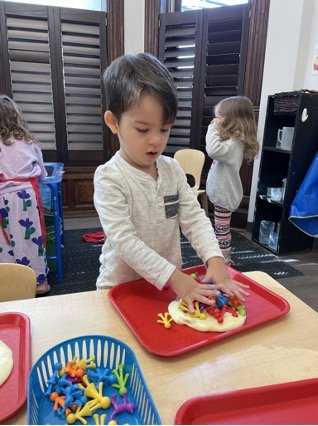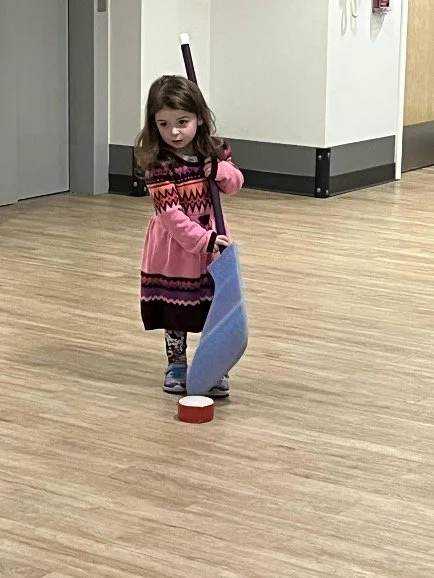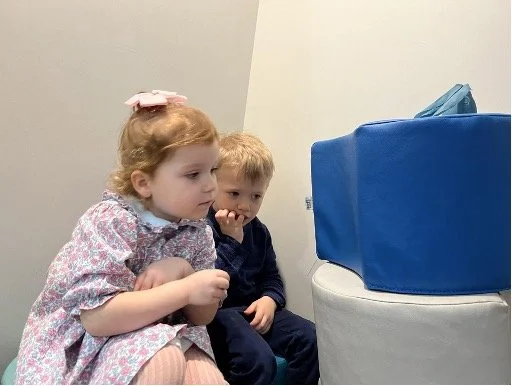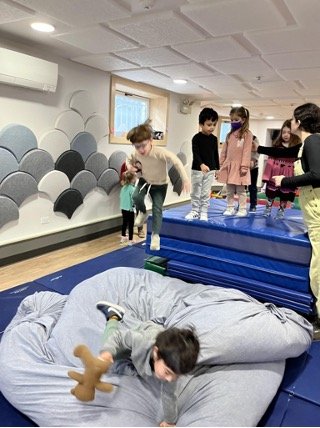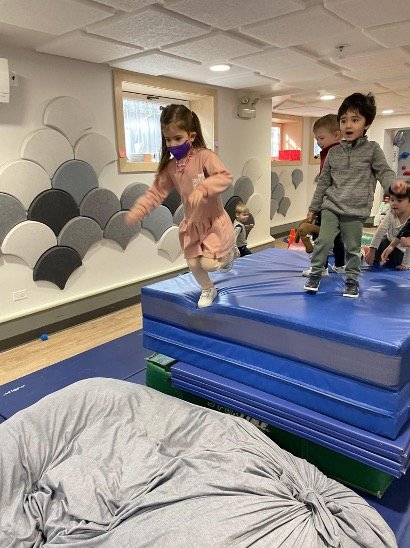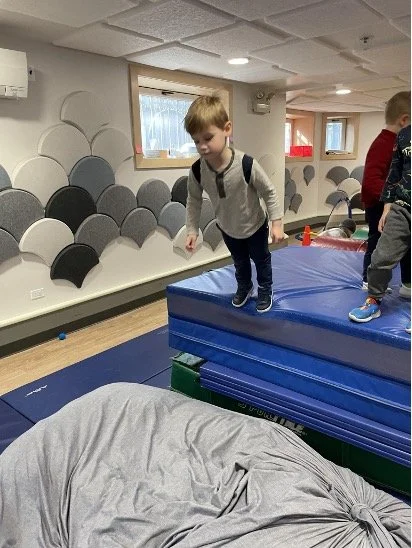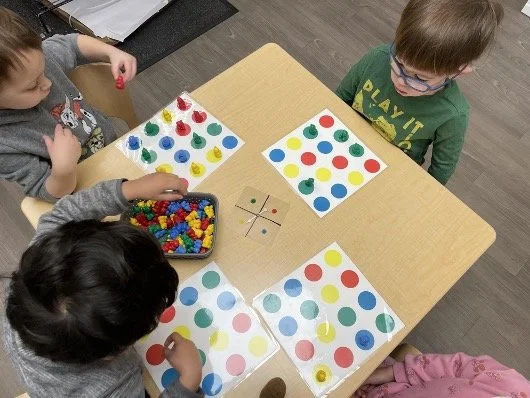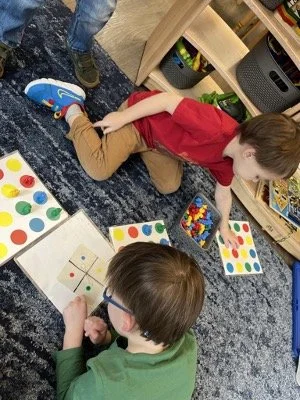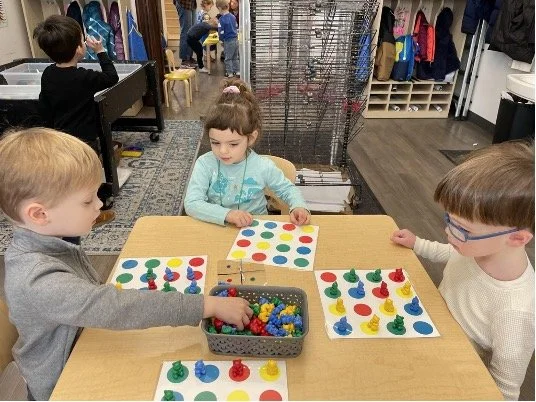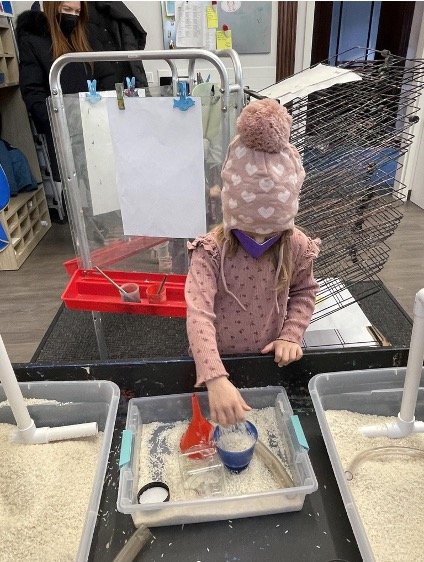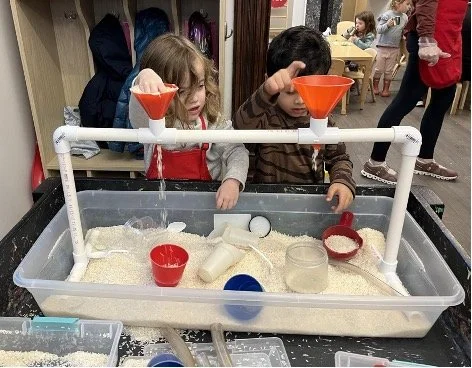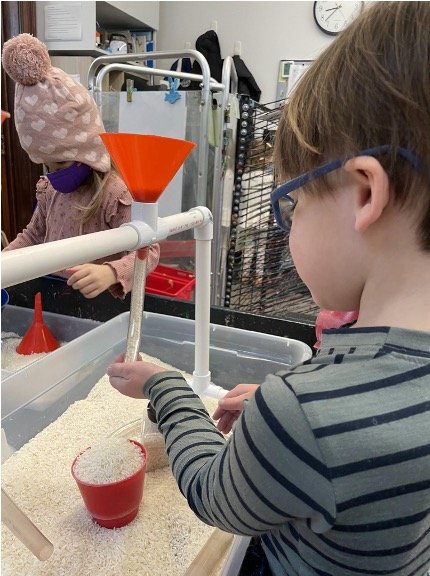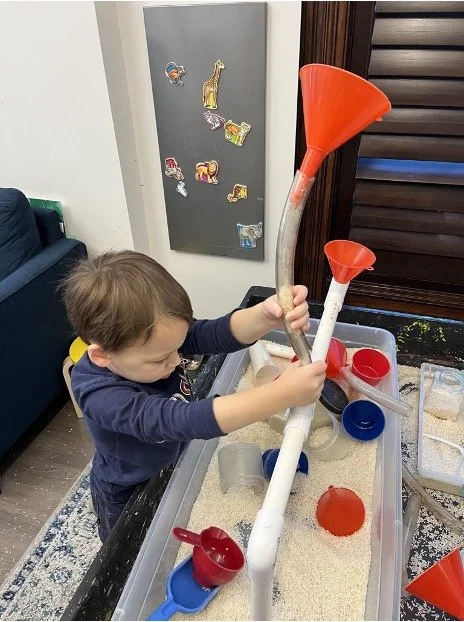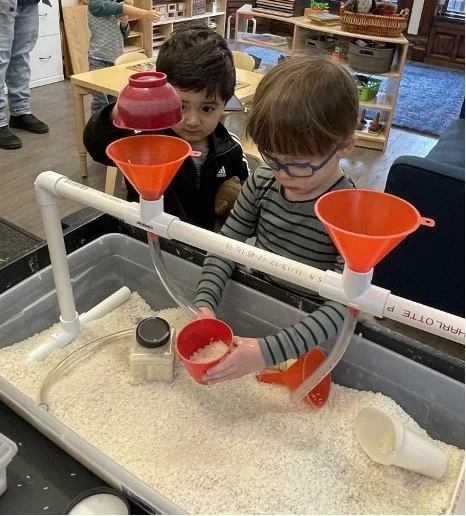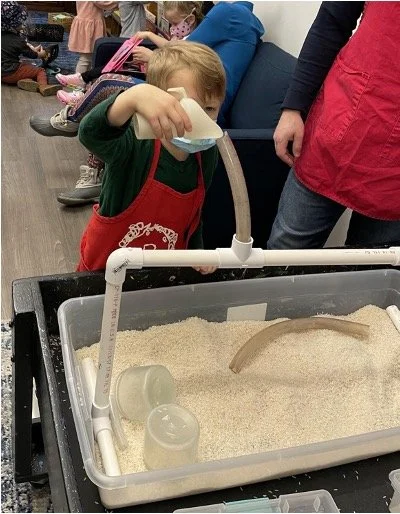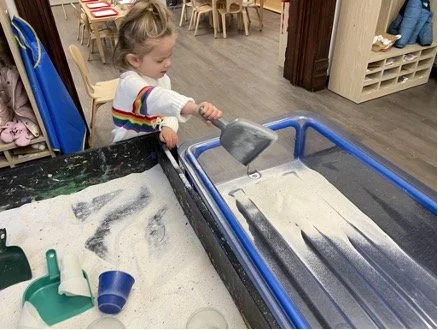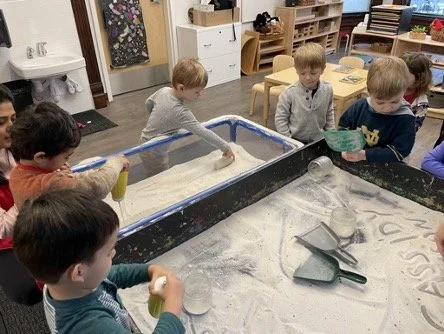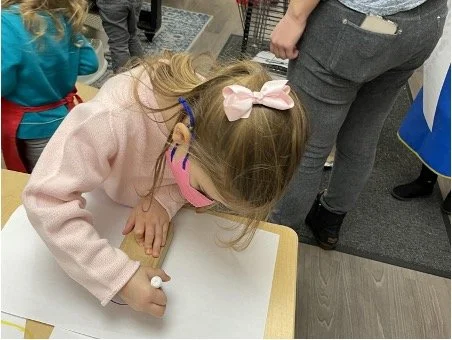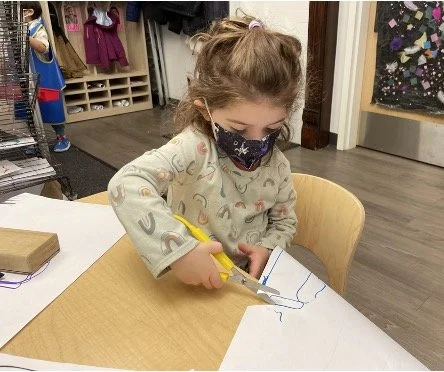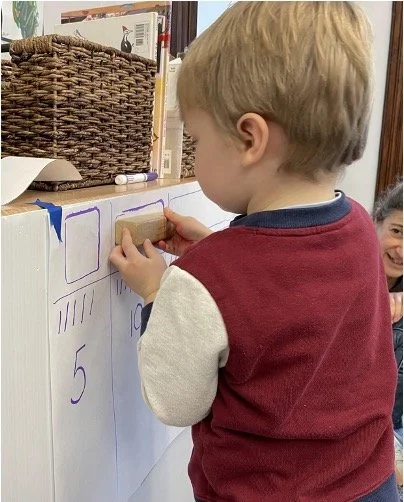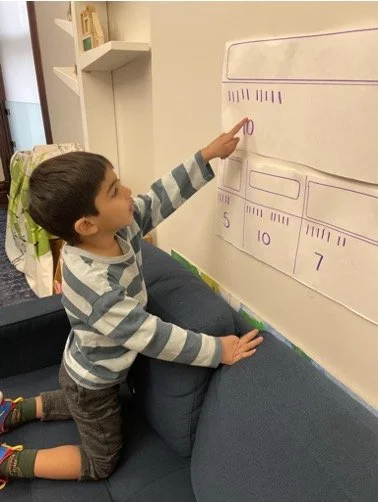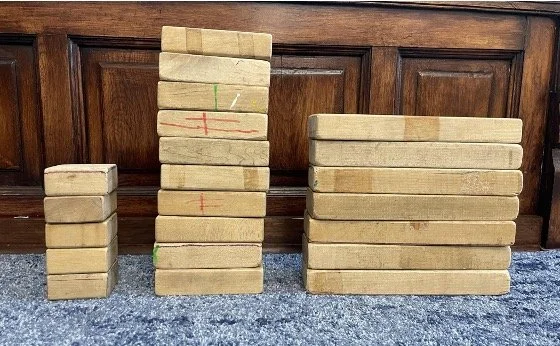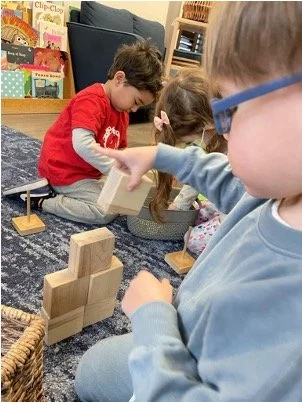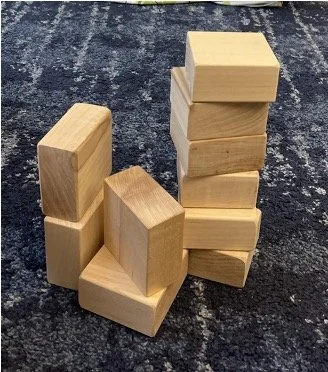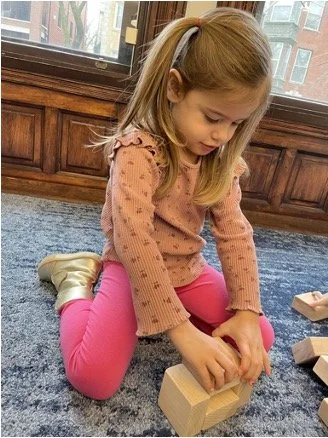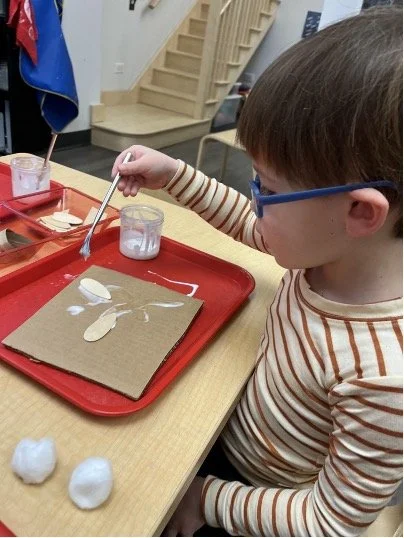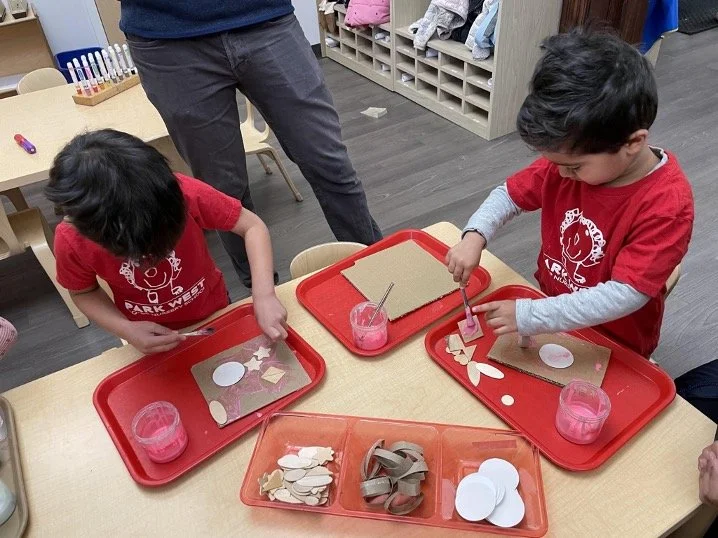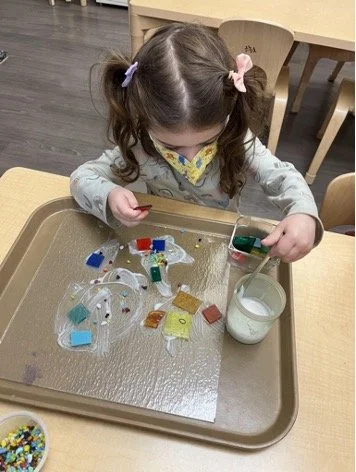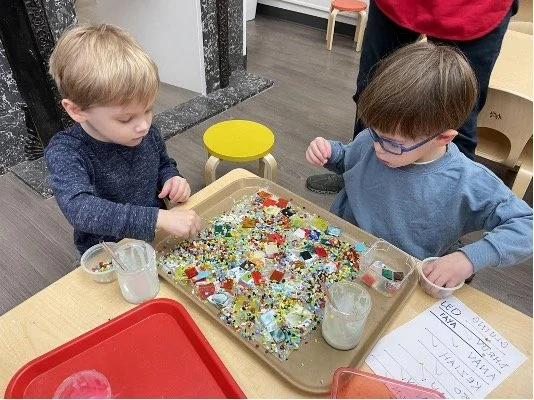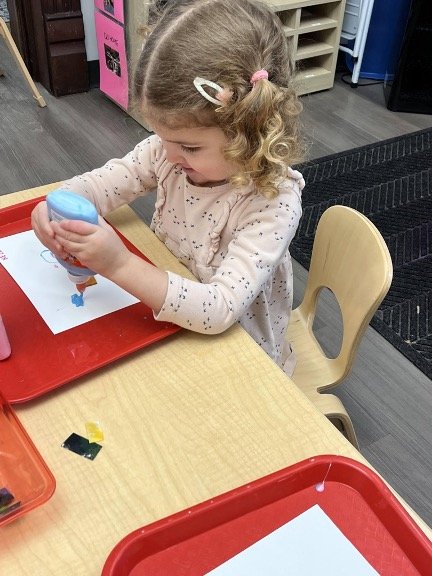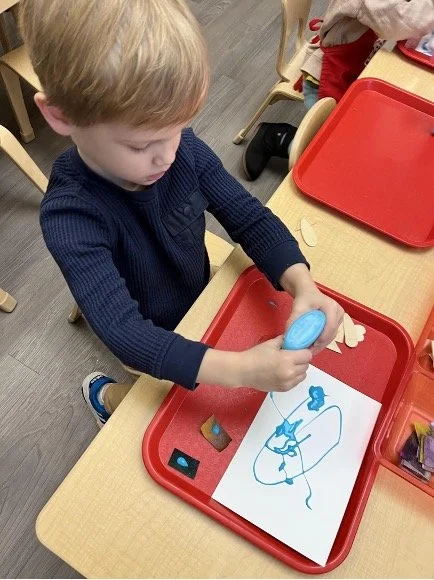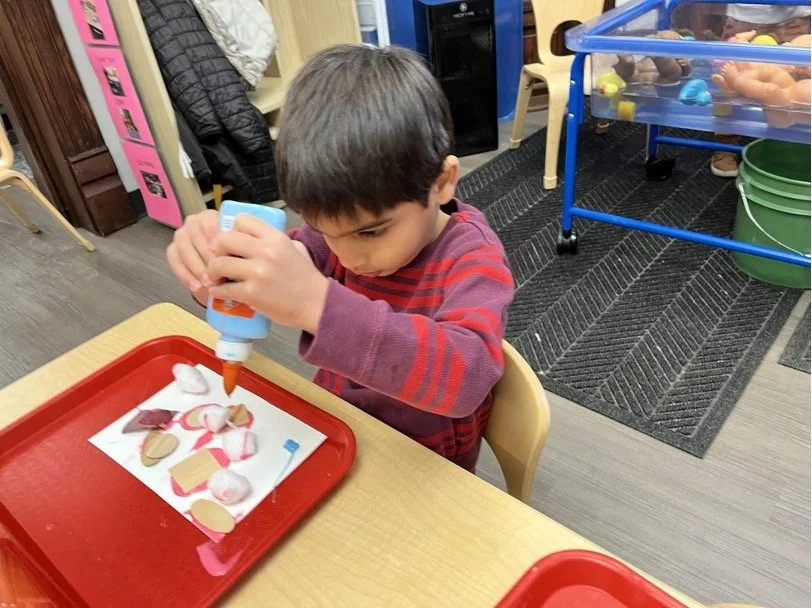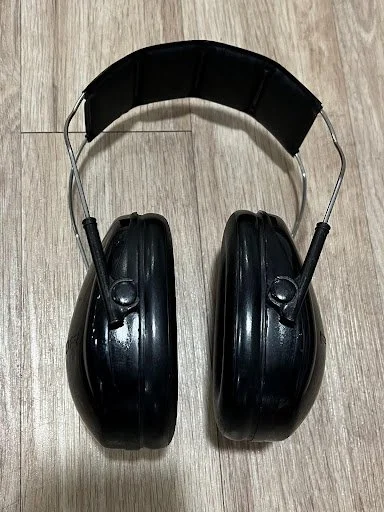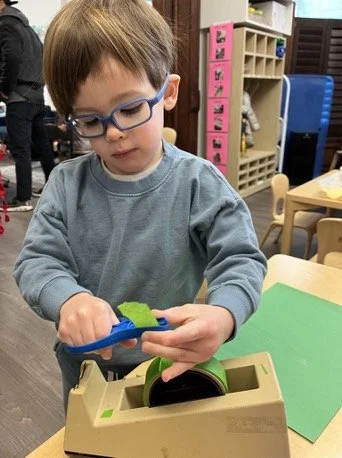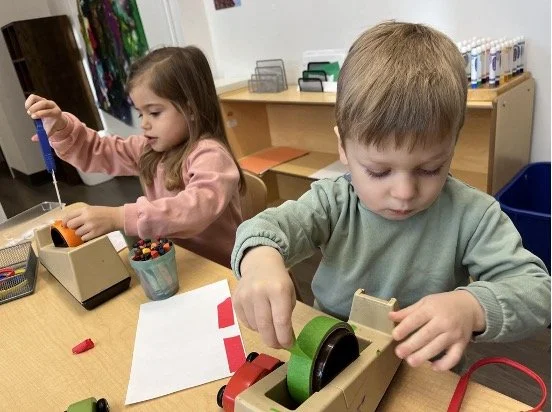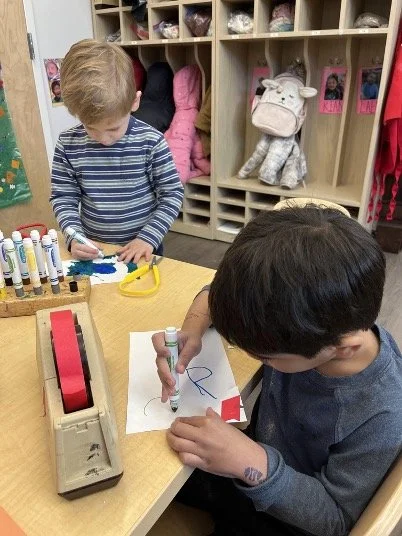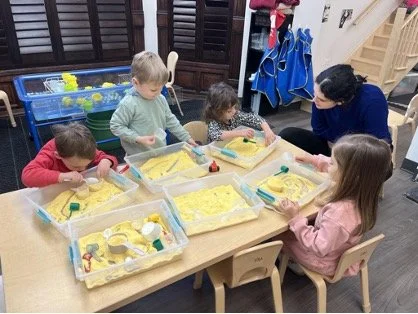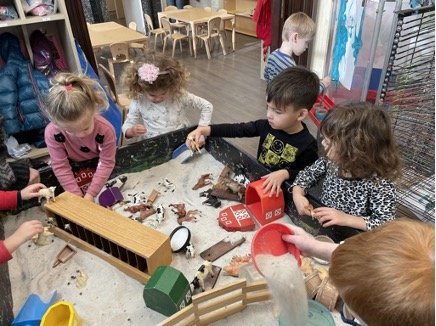Sensory play is something we value so much that we always incorporate it into our school days. Sensory play refers to any activity that can be explored through the five senses. Most of our sensory materials have a very strong tactile component, but also involve sight, sound and even smell. A few of the sensory activities we have used in the classroom this year include dry sand, wet sand, water, play dough, floam, rice, cornmeal, putty and kinetic sand. Exploring and experimenting with these materials encourages the development of sensory processing abilities, language usage, motor skills, scientific concepts and mathematical thinking.
The sensory system helps us to be aware of danger. If you put your hand on a hot stove, you will sense it and know to move your hand. But not all signals are so clear. Something too hot is dangerous to touch, but how hot is too hot? Have you ever met a kid who insists on washing hands in ice cold water? This is someone who understands that hot things can hurt, but hasn’t fine-tuned their responses to temperature. In order to accurately interpret the signals we receive, we need a lot of experience with them. Each experience stimulates neural connections, and repeated experiences deepen those connections. Eventually, through repeated and varied experiences, children are able to better process and respond to sensory information. They are able to understand which sensory information can be filtered out and which you must pay attention to. Water that’s boiling on the stove is too hot to touch, but it’s ok to wash your hands in warm water. If you are sitting at your desk in middle school and the fire bell rings, you need to react. But if you’re in that same school room and someone giggles or taps their pencil, there’s no need to react. If you are good at processing auditory signals, you will be able to tune those sounds out and finish your work. So it is with each of our senses. It takes many experiences for the brain to develop its processing capacities. Sensory play provides some of this much-needed experience. Because kids are in control of their play, they can interact with materials in ways that are just right - that encourage their sensory system to grow without overwhelming it.
In addition, playing with sensory materials stimulates language development, as children describe their feelings, observations and actions. Playing next to children with these materials provides opportunities for adults to model language usage in context.
Sensory play also encourages the development of motor skills as kids use their hands to manipulate objects, knead dough, scoop and pour water.
Providing open ended sensory materials provides opportunities for kids to develop an understanding of the physical world. As kids explore a substance, they observe what happens when they act upon it. Understanding how substances act in different circumstances provides the basis for important scientific concepts. What happens when I pour water into a container that’s already full? What happens when I drop a toy into the water? What happens when I push down on play dough? Once they develop some solid understandings about how things act, they might start asking questions about why, which might lead to a hypothesis that can be tested. Exploring and observing is especially important, though, because if you don’t play with things this way, it’s hard to know what to expect. Before you can have an idea about why water spills over the top of a full container, you have to know that it does that.
On top of all of this, sensory play can be very soothing. Burying your hands in a pan full of corn meal or smooshing play dough is very calming. It seems fitting that the system designed to alert us to danger also provides avenues to soothe and calm us. Think about how reassuring it is when someone pats you on the shoulder or how a massage can help you relax. Tactile materials can have a similar effect. You might consider offering some of these materials to your child at home during times of stress or even giving them a try yourself.


